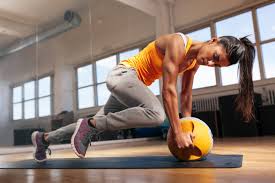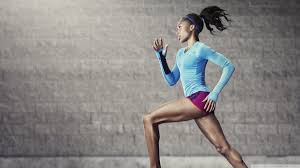This post provides youth coaching advice on analyzing the demands of their sport before designing youth programs. It covers topics such as technique, exercise selection, variety, prehab programs, and specialization. The post also answers questions on training differences between male and female athletes, the ideal age to introduce speed training, prioritizing strength or speed, and estimating an athlete’s potential by body type.
What advice do you have for youth coaching in terms of analysing the demands of their sport before designing their youth programs?
Coaching young athletes is arguably the most critical time to get it right. The youthful days of strength and conditioning input are very formative, hence good technique and suitable exercise selection must be forthright in any planning.
We all recognize that good technique reduces injury and boosts performance, so we should promote it from day one. We should always prioritize promoting or correcting good technique over pursuing strength or hypertrophy gains.
Young people need plenty of variety in all aspects of their training. This creates general improvements that later on can lead to specific gains. Where the sport concerned is one-sided (tennis, sweep or rowing) or unilaterally limb-dominant a thorough prehab program should be introduced early, carried out regularly, and be continually monitored.
For one year I was in charge of the strength and conditioning at the LTA (Lawn Tennis Association) in London and there were young kids there whacking a tennis ball for 4 – 5 hours per day and coaches were concerned that so many were breaking down and getting chronic injuries at early ages. It wasn’t ‘Rocket Science’: doing something so repetitive each day if not counter balanced by preventative or rehab interventions is courting disaster.
My advice to parents is, not to specialise too early, and if you do, get your child to play a good bilateral sport as well. I have always been of the opinion if kids specialise in individual sport at too early an age, they miss out on the positiveness of playing in a team and being in a team environment.

Should training differ between male and female athletes? Please explain.
Not really, I have done most of my professional work with male athletes, but I have also worked with many female athletes in a wide variety sports including rugby, tennis, surf boat rowing, hockey and triathlon. Apart from finding girls a bit more emotional, I can’t see appreciable differences.

At what age is it ideal to introduce speed training? Please explain.
Good Question. I don’t really know. If you are talking about speed technique (from a purely athletics point of view) I would say pretty early on. I don’t and never have considered myself a ‘speed’ coach. Mark Sayers is an academic sprint coach. He’s worked with top teams like The All Blacks and Wallabies. He wrote an intriguing paper recently. He argued that enhancing straight-line speed in rugby players through technique alone is nearly impossible. If achievable, it would consume too much weekly training time.
Once bad or poor habits have been developed it is very difficult to change them. (So, I guess speed technique would be very beneficial early on). Sayers made another point I concur with. He believes the best time to enhance sport is during the acceleration phase. This is also known as the power phase. It’s worth noting the average speed effort in rugby league, rugby union, and soccer (EPL) is under 12 metres.This represents almost totally the acceleration phase.
Which should a coach prioritize first – strength or speed? Please explain.
Strength always. We are predisposed to our muscle fibre make up. We should prioritize muscle growth and strength before power for speed development. Starting with speed can yield early gains. However, it often neglects building a solid strength and power foundation. This foundation is crucial for optimal speed development.

Is it possible to estimate an athlete’s potential by looking at their body type? What are the three types of body types?
Yes, I believe body type and body shape do often determine first of all what type of sport a person plays, and usually what positions in that team that he or she ends up playing. When I played rugby at school, coaches placed the bigger kids in the front row. Fast players took positions in the backs. Small players played half back, and those with a strong aerobic engine played in the back row.

Looking at the classical body types; mesomporph, ectomorph and endomorph one can see definite tendencies. Endomorphs don’t get involved in much sporting activity. They tend to play (and are often good at) sports such as golf or darts. They find it harder in aerobic sports. Mesomorphs lean to the contact sports and are often best suited to sport like rugby and rugby league. They tend to shy away from pure aerobic sports and tend to play positions in team sports where size, strength and power are reliable assets.
Ectomorphs play a wide range of sports. They can play contact sports but usually don’t get involved in the heavy contact. They also lean-to racquet sports and a wide variety of aerobic sports such as rowing, triathlon and distance running. When mesomorphs and ectomorphs begin to specialise in one sport or activity, they tend to actually develop an even more defined body shape, depending on the needs of the sport.
If this article interested you, you may also be interested in youth sport, or sport coaching employment statistics.
If you have are interested in studying to work in the Fitness Industry, you can schedule a phone call with our Careers Adviser, just click in the image below.

